Itineraries
Discover some itineraries
Each itinerary offered by Umbria & Bike is designed to let you experience an authentic adventure, in close contact with the nature, culture, and traditions of a land that never ceases to amaze with every pedal stroke.
Whether you’re an experienced cyclist or a casual enthusiast, you’ll find routes suited to your pace — from peaceful country roads to more adventurous trails surrounded by greenery.
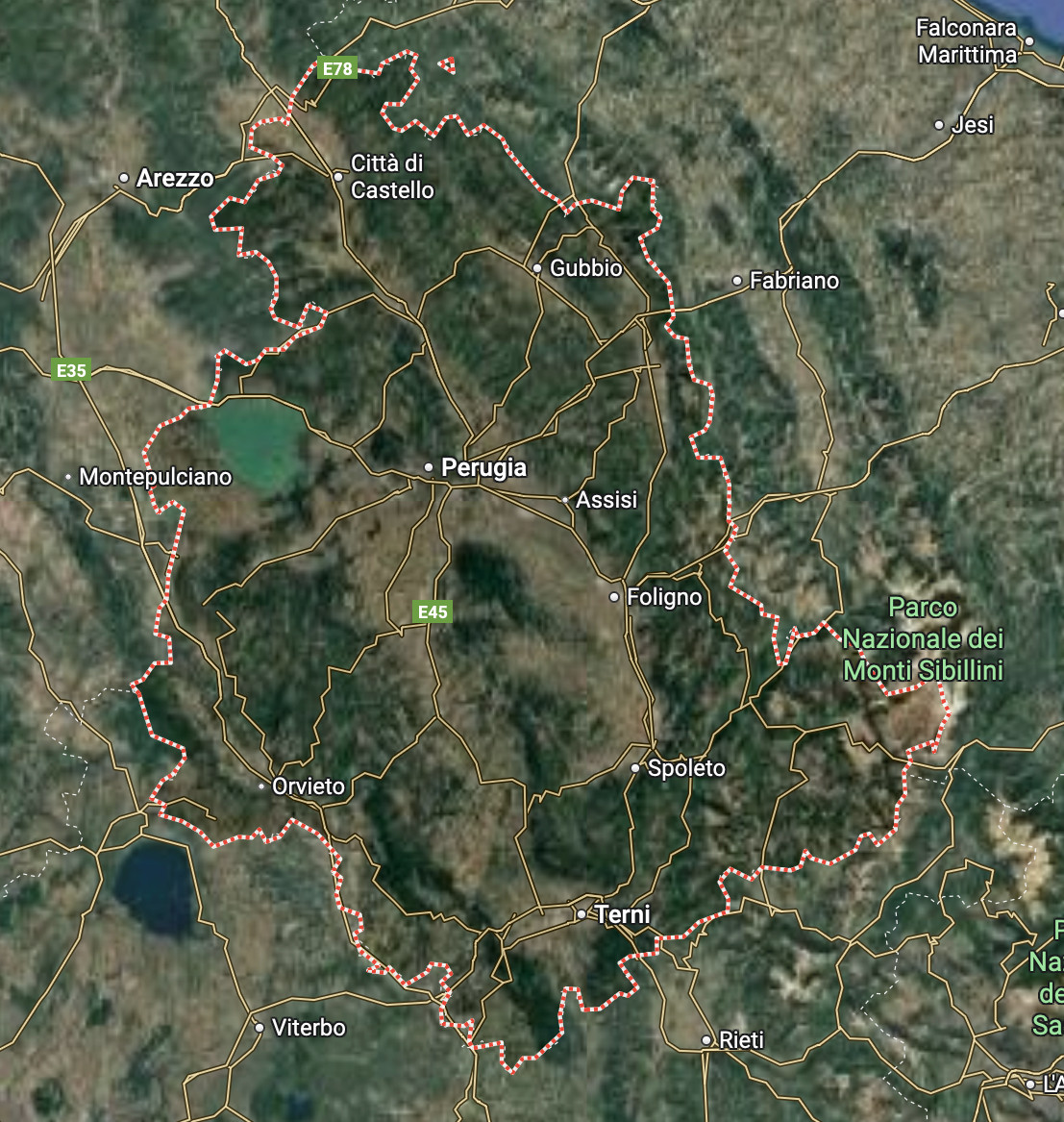
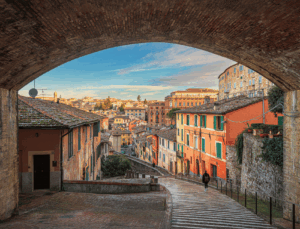
Perugia, the capital of
Umbria, is a city rich in
history and culture.
Its medieval streets,
the majestic Piazza IV
Novembre, and the Palazzo
dei Priori recount centuries
of tradition. Don't miss a visit
to the National Gallery of
Umbria, the Etruscan Well,
and the Cathedral of San Lorenzo.
Explore the fascinating history
of the Rocca Paolina
and enjoy the sunset at the
Carducci Gardens.
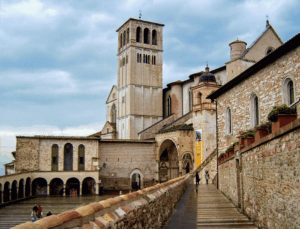
Assisi, the city of Saint Francis,
is a sacred place that emanates
spirituality and beauty.
Visit the Basilica of Saint Francis,
a UNESCO World Heritage site,
and the Basilica of Saint Clare.
Stroll along the narrow medieval
streets to discover historic churches
and breathtaking views of the valley below.
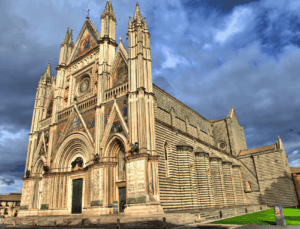
Orvieto, perched on a tufa cliff,
captivates with its Gothic
Duomo and the Pozzo di San
Patrizio (St. Patrick's Well),
an extraordinary work of
engineering.
di Castello
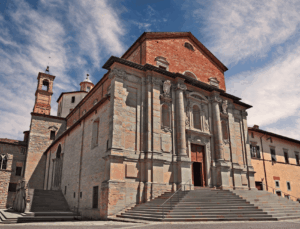
Città di Castello, a city of art
and culture, is famous for its
Ceramic Museum and the
Palazzo Vitelli alla
Cannoniera, an elegant
Renaissance building.
Don't miss the Duomo
of San Florido and a stroll
through the historic center.
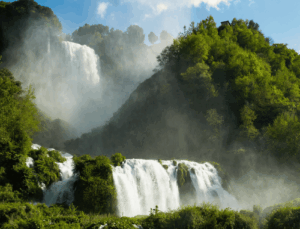
Terni, known as the
“city of steel,” is
surrounded by nature, with
the picturesque Marmore Falls,
one of the highest waterfalls
in Europe. The historic center
is home to the charming
Cathedral of Terni. Discover
the story of Saint Valentine here.
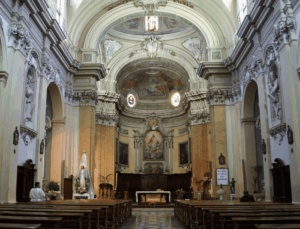
Amelia is one of the oldest towns
in Umbria. Its
cyclopean walls and the Cathedral
of Amelia tell the story of its
millennial history. The Civic Museum
and the Archaeological Park
of Carsulae,
with its Roman ruins, are
excellent points of interest.
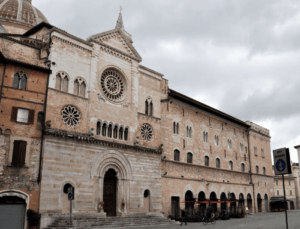
Foligno is a historic town
that reflects the medieval
spirit of Umbria. The
Town Hall and the
Cathedral of San Feliciano
are among its main attractions.
Every year, the town hosts the
historic Giostra della
Quintana, a medieval reenactment
that involves
the entire region.
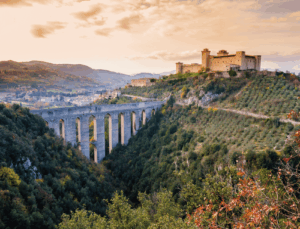
Spoleto, a city steeped in
history, is famous for its
Duomo (Cathedral) and the
Castle of the Dukes of
Spoleto. The Festival dei
Due Mondi (Festival of Two
Worlds) is an international
cultural event that
celebrates music, theatre,
and dance. Don't miss the
Ponte delle Torri (Bridge of
Towers), an incredible
medieval structure.
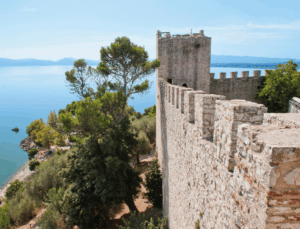
Lake Trasimeno, the largest
lake in Umbria, is the
green heart of the region.
Its islands, Isola Maggiore,
Isola Minore, and Isola
Polvese, offer enchanting
scenery and nature trails.
The Trasimeno Regional Park
is ideal for cycling and
hiking.
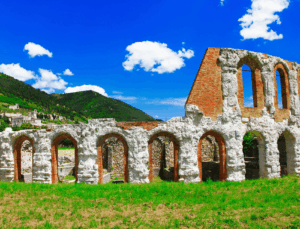
Gubbio, a medieval city
that preserves the charm of
times gone by. The Palazzo
dei Consoli and the Roman
Theater are testimonies to a
splendid past. Don't miss
Monte Ingino and the
spectacular Corsa dei Ceri
race that takes place every
year in May.
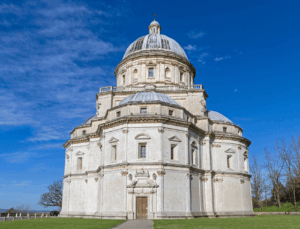
Todi is a town that
embodies the beauty of
Umbrian tradition. Piazza
del Popolo is one of the
most evocative medieval
squares in Italy, while the
Cathedral of Todi is one of
the main attractions. For
history lovers, the Diocesan
Museum and the Temple of
Santa Maria della
Consolazione are a must-see.
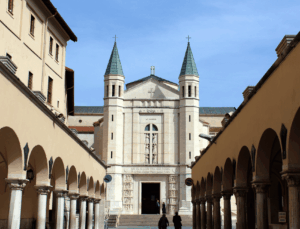
Cascia is the city of Saint
Rita, one of the most
revered saints in the
Christian world. The Basilica of
Saint Rita is the spiritual
heart of the city.
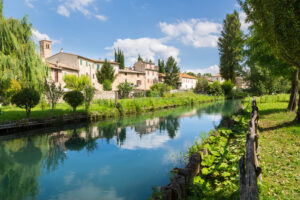
Bevagna
A medieval gem, surrounded
by walls and crossed by the
Clitunno River.
Its heart is Its beating heart is
Piazza Silvestri, one of the
rare examples of a medieval
square with an irregular
layout.
Bevagna is famous for the
"Mercato delle Gaite," a
historical reenactment that
brings the city back to its
ancient splendor, with
crafts and customs from the
13th century.
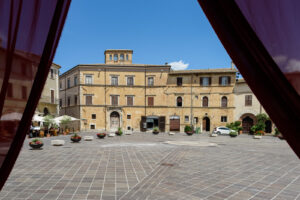
Montefalco
Known as the “Balcony of Umbria,”
Montefalco offers a
breathtaking view that
spans the entire valley.
But its fame is inextricably
linked to wine:
this is where Sagrantino di Montefalco
DOCG is produced, a
powerful and structured red
wine that is famous
throughout the world.
The city itself, with its
The town itself, with its
narrow streets and churches,
exudes an atmosphere of
deep spirituality and
tradition.
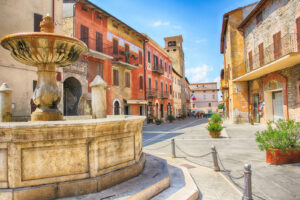
Deruta
It is the undisputed capital
of artistic ceramics.
Here, the art of modeling
clay has been handed down
from generation to
generation, giving life to
unique creations: from
plates decorated with floral
or animal motifs, to vases
with sinuous shapes and
artifacts that adorn
homes and churches all
over the world. Entering
Deruta is like taking a
dip into an open-air museum,
where every shop window
is an art gallery.
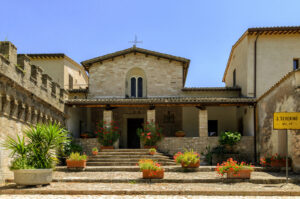
Spello
An enchanted village,
nestled on the slopes of
Mount Subasio, which
stands out for its
“infiorata,” a
unique event in which
the streets are covered
with carpets of flowers
that create sacred art
paintings. But Spello is
much more than that: its
ancient Roman gates,
walls, and flower-filled
alleys tell a thousand-year-old
story that combines
elegance with the typical
atmosphere of small Umbrian
villages.
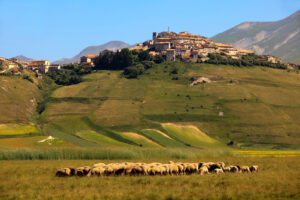
Norcia
A symbol of resilience and
tradition, Norcia is located
in the heart of the Monti
Sibillini National Park.
It is a center of excellence
for
norcineria, the ancient art of
processing pork,
which finds its highest expression
here in
cold cuts and hams of
the highest quality.
Norcia is also a city
of spirituality, linked to
the figure of St. Benedict,
patron saint of Europe, whose
basilica dominates the main square.
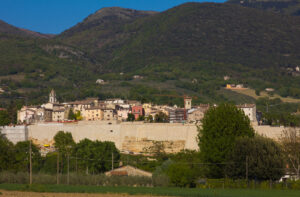
Massa Martana
This medieval village in the
province of Perugia celebrates
its agricultural heritage
and traditional flavors.
It preserves important historical remains
from Roman and medieval times,
including the ancient abbey of San Fidenzio.
Its hilltop location offers
splendid views of the Tiber valley
and the Martani Mountains.
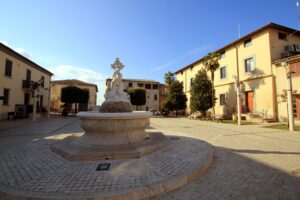
Attigliano
Located in southern Umbria,
in the province of Terni,
Attigliano is a small town
strategically positioned
near the border with Lazio.
It dominates the valley
and the Tiber with the remains
of its medieval castle,
maintaining a peaceful and
authentic atmosphere. Its
proximity to the railway
station makes it a convenient
access point to the region.
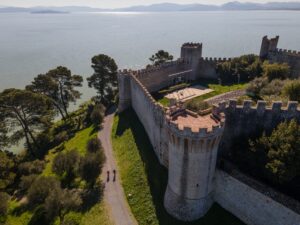
Tuoro sul Trasimeno
Overlooking the northern
shore of Lake Trasimeno, in
the province of Perugia, Tuoro
is famous for being the site of
the historic Battle of
Trasimeno between the
Romans and Carthaginians in 217 BC.
It is home to Isola Maggiore,
reachable by ferry, and
offers a lakeside promenade
ideal for walks. It is a lively
and scenic tourist center.

Passignano sul Trasimeno
This charming village overlooks
the northern shore of Lake
Trasimeno, dominated by its
medieval fortress, which offers
breathtaking views of the lake.
It is one of the most popular
resorts on the lake, with a lively
historic center full of narrow
streets and restaurants. Passignano
is also an important center for
sailing and water sports.
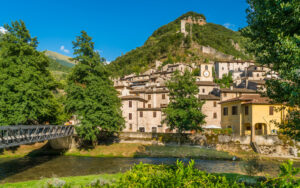
Scheggino
Scheggino is a
characteristic medieval village
in the Valnerina,
in the province of Perugia, made
famous by its springs and
its aquaculture
and trout processing activities.
It is a reference point
for lovers of river sports
such as rafting on
the waters of the Nera.
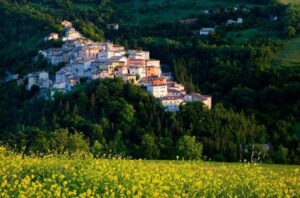
Preci
Nestled in the Sibillini Mountains
in the province of Perugia,
Preci is a town
famous for its historic
“Preci School of Surgery,”
which flourished in the Middle Ages.
Its territory, part of the
Sibillini Mountains National Park,
is rich in unspoiled nature
and ancient
abbeys.
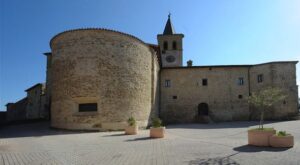
Castel Ritaldi
A small town in the heart of
Umbria, in the province of
Perugia, Castel Ritaldi is dominated by an ancient
fortress dating back to the 12th
century that defines its
appearance. The territory is
mainly hilly and suited to
agriculture, in particular the
production of excellent olive
oil. Its location makes it a
peaceful vantage point
between Spoleto and
Montefalco.
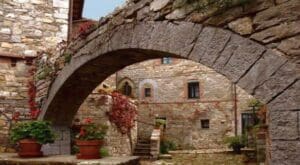
Piegaro
It is a place historically
linked to glassmaking, a
tradition that dates back
to the 13th century and is
still celebrated today in the
modern Glass Museum,
housed in the town's old
glassworks.
The surrounding area The
surrounding area,
characterized by rolling
wooded hills
(such as Monte Montarale,
which offers splendid
views), is ideal for
slow tourism and
excursions.
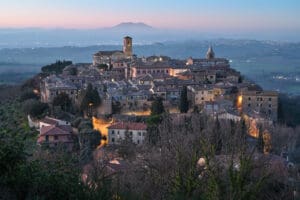
Bettona
Surrounded by walls that
enclose art treasures and
breathtaking views of the
Umbrian Valley, a place where
millennial history blends
with the tranquillity of the hills.
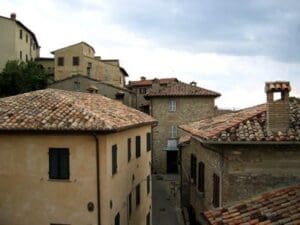
Montone
Listed among the most
beautiful villages in Italy, it
stands perched like a
medieval fortress, inviting
visitors to lose themselves
in its quiet alleys and visit
the precious Church-
Museum of St. Francis,
guardian of timeless charm.
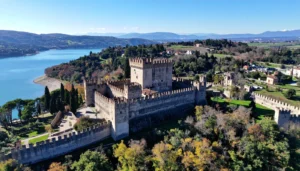
Castiglione del Lago
A pearl nestled on a
promontory overlooking
Lake Trasimeno, it enchants
with the imposing Rocca del
Leone and Palazzo della
Corgna, offering unforgettable
sunsets over the placid
waters.
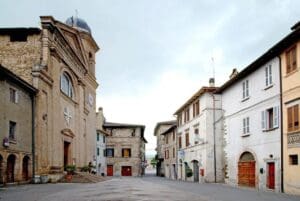
Cannara
Capital of high-quality red
onions, this village is a
jewel of agricultural
and spiritual traditions,
famous for its typical
cuisine and for
being a place linked
to episodes in the life of St.
Francis.
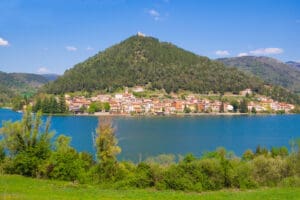
Piediluco Lake
Lake Piediluco is a picturesque body of water in Umbria, known for its irregular shape reminiscent of an edelweiss flower and for the medieval village reflected on its shores. It is an important center for water sports, particularly rowing, regularly hosting national and international competitions.
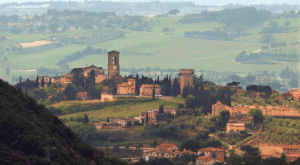
Torgiano
Torgiano is a charming medieval village in the heart of Umbria, internationally renowned as the wine capital. Its hills, caressed by the Tiber River, are the cradle of the prized Torgiano Rosso Riserva DOCG, testimony to a centuries-old winemaking tradition. The village jealously guards the MUVIT (Wine Museum) and the MOO (Olive and Oil Museum), which are unique in their kind.
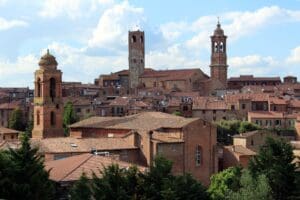
Città della Pieve
Città della Pieve is a charming medieval village in the province of Perugia, famous for its panoramic location overlooking the Valdichiana and Lake Trasimeno. It was the birthplace of the famous Renaissance painter Pietro Vannucci, known as Perugino, whose works are preserved in various churches and palaces in the historic center.
Discover the GPX tracks
del Monte
